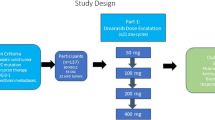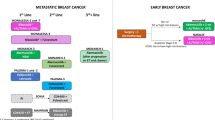Abstract
In vitro phase II study of a new cyclic hexapeptide anticancer agent, RA-700 was studied on the human tumor clonogenic assay. From the results of the study using the human tumor cell line of lung cancer (PC-6), RA-700 appears to possess time-dependent antitumor activity. Therefore, against the 148 human specimens of various malignancies, the chemosensitivity of RA-700 was tested at the concentrations of 10 μg/ml, 1 μg/ml and 0.1 μg/ml in continuous exposure schedule for 2 weeks by using the human tumor clonogenic assay. If the criteria for in vitro sensitivity was based on ≧ 70% inhibition of colony formation, out of 148 specimens 59 specimens (40%) were evaluable and the chemosensitivity rate of RA-700 were 67% (4/6), 22% (2/9), 17% (3/18) and 10% (1/10) for ovarian cancer, non-small cell lung cancer, breast cancer and colorectal cancer, respectively. An overall chemosensitivity rate against 13 different histologic types of cancers was 22% (13/59) (≧ 70% inhibition of colony formation) and 39% (23/59) (≧ 50% inhibition of colony formation). RA-700 showed almost same chemosensitivity compared to that of five standard anticancer drugs (adriamycin, mitomycin C, cisplatin, vinblastine and 5-FU), but the spectrum of RA-700 activity appears to be different from that of the standard drugs. Furthermore, the antitumor activity of RA-700 had no relationship with prior chemotherapy. These results indicated that RA-700 is a candidate for phase I study.
Similar content being viewed by others
References
Itokawa H, Takeya K, Mihara K, Mori N, Hamanaka T, Sonobe T, Iitaka Y: Studies on the antitumor cyclic hexapeptides obtained from Rubiae Radix. Chem Pharm Bull 31: 1424–1427, 1983
Itokawa H, Takeya K, Mori N, Hamanaka T, Sonobe t, Mihara K: Isolation and antitumor activity of cyclic hexapeptides isolated from Rubiae Radix. Chem Pharm Bull 32: 284–290, 1984
Hamburger AW, Salmon SE: Primary bioassay of human myeloma stem cells. J Clin Invest 60:846–854, 1977
Inoue K, Mukaiyama T, Mitsui I, Ogawa M: In vitro evaluation of anticancer drugs in relation to development of drug resistance in the human tumor clonogenic assay. Cancer Chemother Pharmacol 15:208–213, 1985
Shoemaker RH, Wolpert-DeFilippes MK, Kern DH, Lieber MM, Makuch RW, Melnick NR, Miller WT, Salmon SE, Simon RM, Venditti JM, Von Hoff DD: Application of a human tumor colony-forming assay to new drug screening. Cancer Res 45:2145–2153, 1985
Author information
Authors and Affiliations
Rights and permissions
About this article
Cite this article
Inoue, K., Mukaiyama, T., Kobayashi, T. et al. Activity of RA-700, a cyclic hexapeptide from Rubiae Radix, in the human tumor clonogenic assay. Invest New Drugs 4, 231–236 (1986). https://doi.org/10.1007/BF00179588
Issue Date:
DOI: https://doi.org/10.1007/BF00179588




